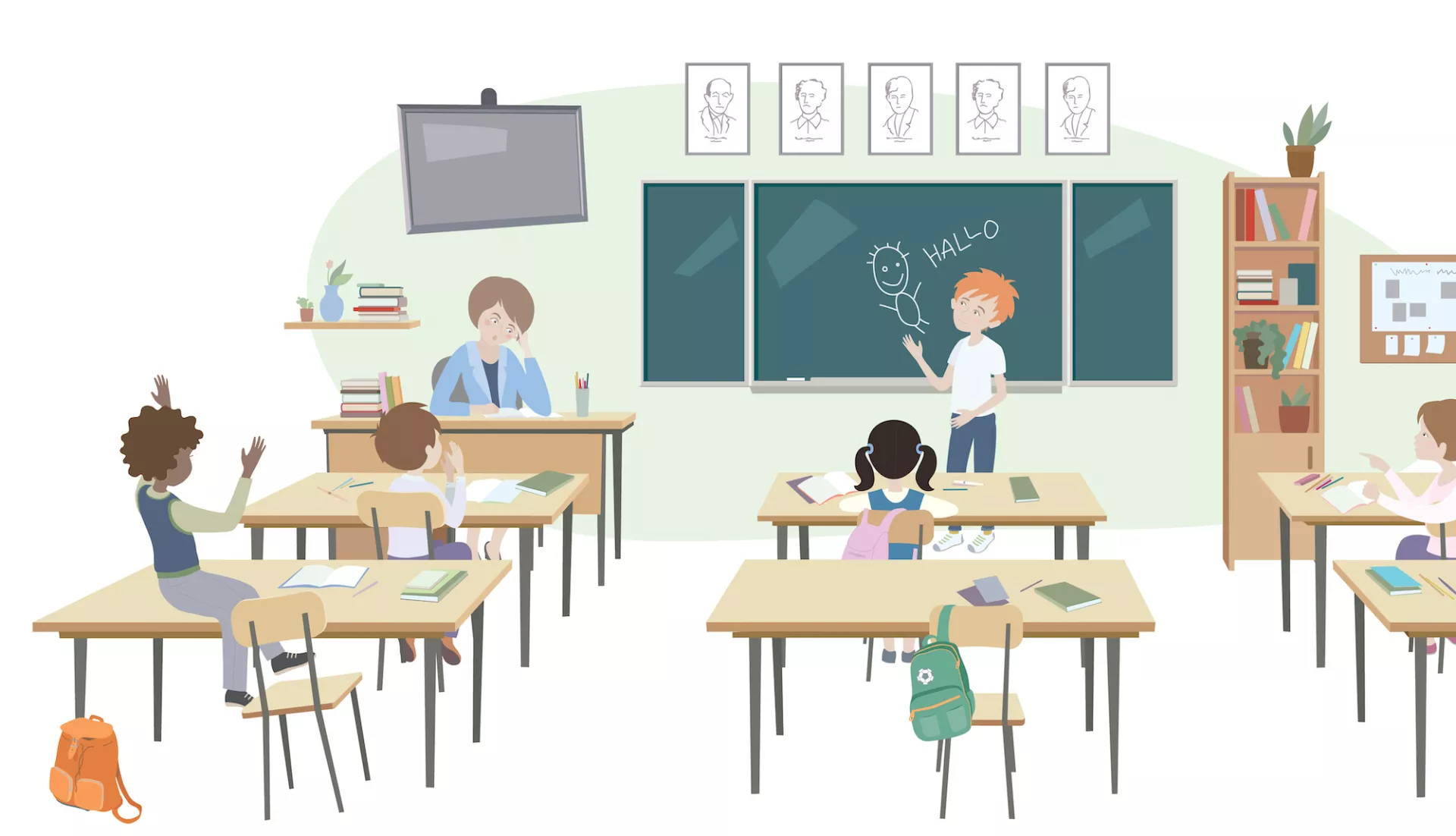
Key Takeaways
- Applied Behavioral Analysis is a process that identifies the triggers and perceived rewards for problem behavior and finds an appropriate behavior that satisfies the need the student is looking for.
- When teachers take the time to get to know students, the signals they send, and what their needs are, they can change maladaptive behaviors into adaptive behaviors.
- ABA is informed by observation and performance data and individualized to the student.
Students blurt out answers without raising their hand. They talk and joke with classmates throughout lessons. Sometimes they fight. They can be disruptive and frustrating, but when educators get to the root of the behavior to discover the reason a student is doing it, finding a better solution is often easier than many realize, says Donna Christy, a school psychologist in Prince George’s County, Maryland.
They can do this with Applied Behavioral Analysis (ABA), Christy says. ABA is a process in which educators can solve a problem behavior by identifying its triggers, the perceived reward for the student exhibiting it, and finding an appropriate behavior that satisfies the need the student is looking for.
Christy acknowledges ABA sounds clinical and complicated, but “it’s really not rocket science,” she says. “Think of ABA not in capital letters, but with a little a, little b, and little a. It’s behavior redirection, essentially.”
She recalls a student who skipped class regularly. When her educators looked at the pattern, it was always English class and drama class that she was ditching. They dug deeper and asked questions to find out what was causing the problem – the girl had experienced a personal trauma, and the assigned texts and plays they were reading and performing were triggering for her because of the trauma narratives embedded in them. She wanted to avoid those triggers, so she didn’t attend class. The solution – provide texts that are not triggering, like a Shakespeare comedy instead of a tragedy. That’s ABA.
“It’s looking at a behavior and determining what purpose that behavior serves. A maladaptive behavior has a purpose behind it. When we break it down, we can figure out what would be a better replacement for behavior that is more adaptive,” Christy says.
The first step is to realize the student’s goal is not to upset you as a teacher.
“There’s a need that’s not being fulfilled and the student doesn’t know how to get that need fulfilled,” she says. “For the child, it’s solving a problem, even while creating one for you, so you need to help them find a better way to solve the problem.”
Clinton Smith is a board-certified behavior analyst and Professor of Special Education at the University of Tennessee, Martin. Smith is also a member of the NEA IDEA (Individuals with Disabilities Education Act) Cadre who consults with Tennessee school districts and trains teachers on the principles of ABA to help them implement interventions in the classroom.
The first thing he asks teachers to do is define the behavior in detail, because disrupting a class looks different in every classroom. He asks them what it looks like for different students, to then identify smaller behavior changes that usually lead up to the bigger behavior, also known as antecedents, and then get to the why. Is the student seeking attention? To escape? To avoid something?
“The behaviors are always trying to tell you something that the student doesn’t know how to communicate,” Smith says.
If they’re avoiding paying attention during lessons, they may not understand the lesson and need to get more help. By talking to classmates, they avoid the confusing work. If they shout out answers, they may want attention. If they receive attention and positive reinforcement when raising their hands and are ignored when they shout out, they will modify their behavior to get the reward of attention. If they pick fights with the teacher or classmates and get sent to the principal’s office or detention, they may want to escape from the class altogether. Providing an area in the class where students can sit and collect themselves might offer the same reward.
“The principles of ABA are designed to get to the why, what’s the purpose,” Smith says. “If they want out, we need to find out why. Does the student need more breaks? More skill development because they feel lost and confused by the work? Finding the why will lead to the solution.”
Behavior as Communication
Donna Christy’s brother has special needs. When he was a student and was having problems with class work, he would start tapping his pencil on his desk. Then he would start shifting in his chair, then if the teacher didn’t notice those antecedents, he would start walking around the classroom and disrupting the other students. He had a problem he didn’t know how to communicate, he displayed clear antecedent behaviors, and then was rewarded by the maladaptive behavior of class disruption. The why: he needed help with his work.
“Behavior is communication. When teachers take the time to get to know students, the signals they send, and what their needs are, they can change maladaptive behaviors into adaptive behaviors,” Christy says. “Taking the time to build relationships in the beginning saves hours of class disruption later.”
The principles and practice of ABA are sometimes misunderstood, Christy and Smith agree.
Some believe the procedures of ABA are abusive and can lead to depression, anxiety, or PTSD, Smith says, because they think it’s going to change the individuality or personality of the student. Others say interventions use punishment rather than reinforcement, or that they fail to focus on development and skills by focusing on behavior.
“But what we want to do is to improve behaviors and by teaching new skills, always with positive reinforcement, not punishment,” he says.
Some members of the autism community are afraid ABA will cause neurodivergent students to lose their individuality, says Smith, who, like board certified behavior analysts, operates under strict compliance and ethics code of the Behavior Analysis Certification Board.
“But a big part of ABA is to meet students where they are and identify goals that are appropriate for individual students,” he says. “We regularly talk to parents and students so they can communicate their needs. We always want to consider, not negate, their lived experiences.”
_________________________________________________________
What is ABA?
As a science
- An organized body of knowledge discovered through the process of objective observation, measurement, and evaluation
As a practice
- A method of applying the principles of behavior to understand and improve important human behavior
ABA is individualized
- Teaching goals are determined after careful assessment of the student’s behavior
- Skills selected for intervention are based on assessment and importance to the individual
ABA methods are grounded in objective, peer reviewed, published, research
- Teaching tactics chosen from the universe of proven strategies
- Effort is made to ensure that practitioners are using tactics appropriately (treatment fidelity)
ABA methods are designed to be effective
- Practitioners using ABA methods directly and frequently collect student performance data
- These data are used to make decisions about whether to continue a particular tactic or to try a new one.

